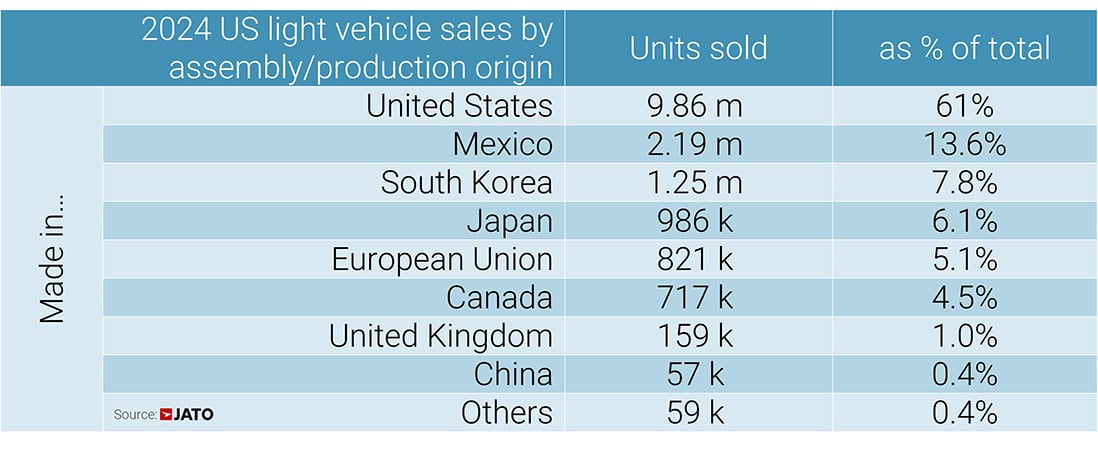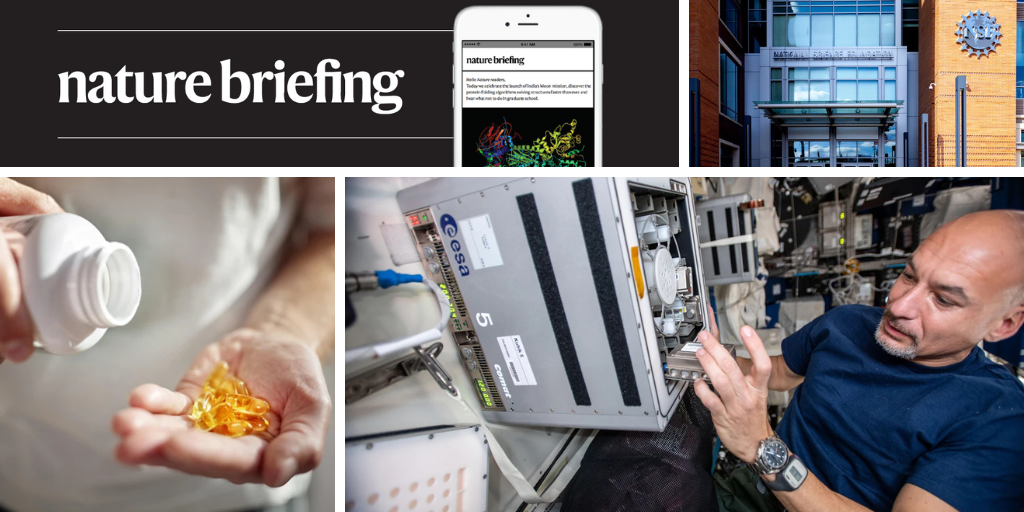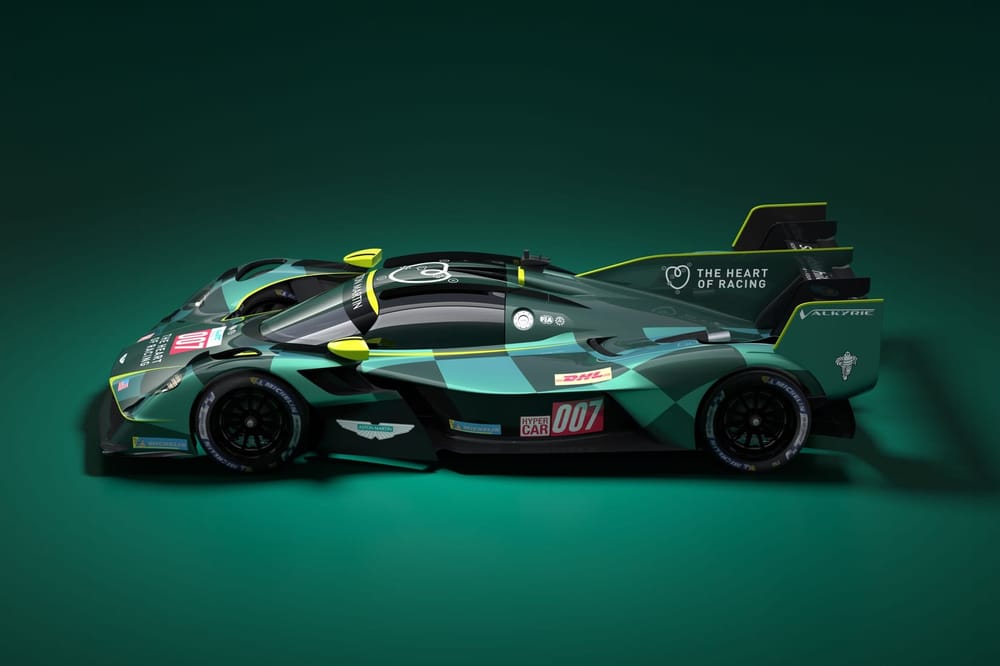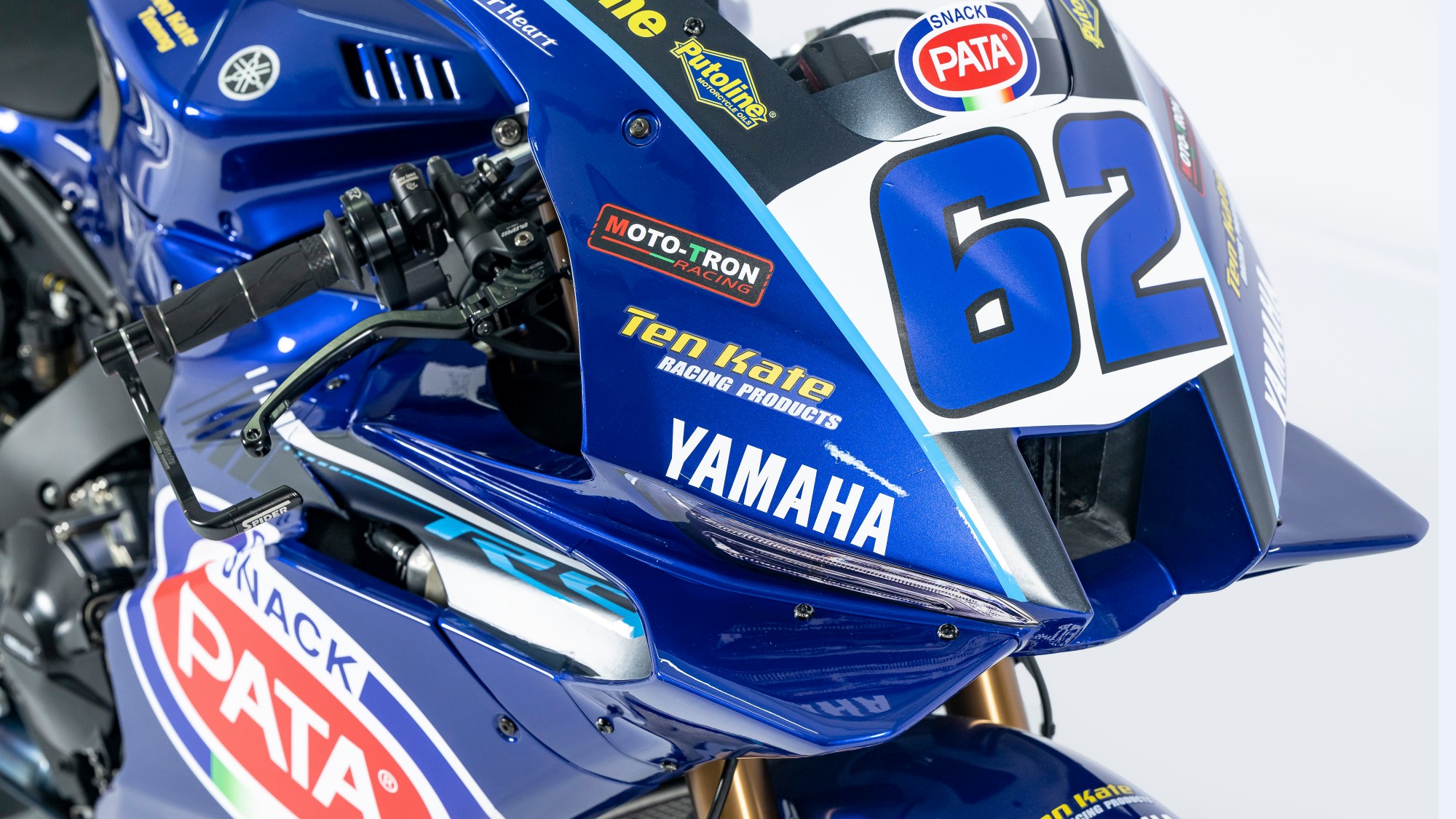Everything you need to know about Aston Martin's unique Hypercar
Aston Martin's revealed a Hypercar that stands out in a stacked field of entries. Thibaut Villemant explains what makes it special


The brand-new Aston Martin Valkyrie will be one of the key attractions of the 2025 endurance racing season. But what makes it so special among a stacked Hypercar field?
Admit it, you've all been waiting for it.
Internally, they like to call it the purebred. With its incomparable looks and its normally-aspirated V12 with a bewitching sound, the Aston Martin Valkyrie will undoubtedly be the favourite of the public this year, in the IMSA SportsCar Championship, in the World Endurance Championship and therefore at the Le Mans 24 Hours.
Aston Martin won the event in 1959 but has not competed in the top class since 2011 and the AMR-One fiasco.
"This is a proud moment for Aston Martin," says Adrian Hallmark, chief executive officer of Aston Martin Lagonda. "To be returning to the fight for overall honours at the 24 Hours of Le Mans exists at the very core of our values and marks a key milestone in our motor racing heritage."
Adam Carter, Aston Martin's head of endurance motorsport adds: "With an extraordinary fusion of F1 technology and road car mastery, Valkyrie is truly built for racing and its participation in the highest level of world endurance racing will only further cement its technological achievement."
The only Hypercar/GTP derived from a production car, the Valkyrie is one of a kind. So why opt for a big, heavy V12? Why, in this day and age, decide to do without a hybrid system? How is it different from the production car?
These are just some of the questions we put to Aston Martin.
What's left of the road car?
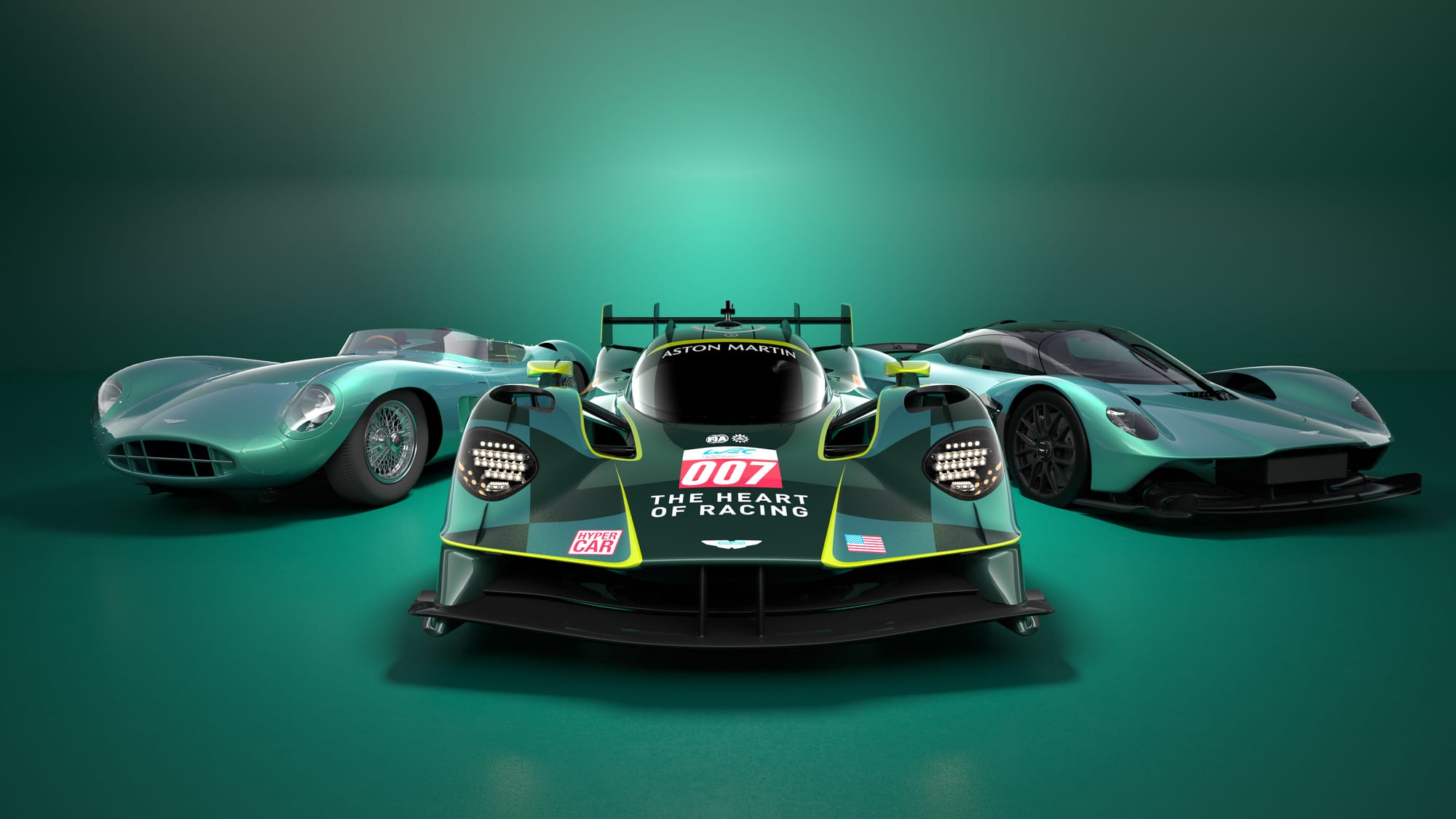
Of the 10 manufacturers currently involved in Hypercar or GTP, Aston Martin is the only one to have taken the decision to use a road-legal car as the starting point of its Hypercar design. But, of course, the engineers at Aston Martin Performance Technology had to carry out a thorough overhaul of the commercially available car.
So just how much of its spirit has been retained?
"You are all aware of the performance window element," Carter says. "We had to redefine the aerodynamics of the car. In terms of repositioning it in the performance window, a lot of that is on the underfloor.
"And you'll also see as per the other LMH [Le Mans Hypercar] and LMDh cars an amount of work put in place around the aerodynamic stability criteria so apertures in the fenders and rear wing endplates, etc. But largely, from a performance perspective, it's in the underbody. Then we've left a large portion of the upper surfaces as a stock Valkyrie."
It has to be said that the production car is a monster, generating more than 1800kg of aerodynamic downforce. How much difference does that make to the Hypercar? "It's not a straightforward answer because of the way the production car operates with its active aerodynamics, etc," Carter replies. "Obviously the LMH cars are passive vehicles whereas the road car is a fully active car. So it's unfair to do a comparison. So the concept of the underfloor is largely the same but the way we load it and how we stress it is different.
"What's been very key to us as part of that process is to work the aerodynamics underbody and make sure we can keep as much of the Valkyrie's DNA. So I have been heavily involved to make sure that, at the end of the day, it is a Valkyrie and above all an Aston Martin. So, it's about optimising the characteristics of the Valkyrie within the fundamental performance contributors."
To meet the challenges of racing, including rapid driver and tyre changes and live refuelling at pitstops, plus the possibility of car-to-car contact, developments include quick-change front and rear bodywork, a single-point rapid refuelling coupling, a high-speed pneumatic jack system incorporated into the chassis and a driver cockpit optimised for safety, quick access and visibility.
But from the outside, one thing is certain: the Valkyrie is still clearly recognisable and, in this respect, well done Aston Martin, because the car meets the spirit of the regulations in every aspect.
So is designing a race car from a production car more complicated than starting from scratch?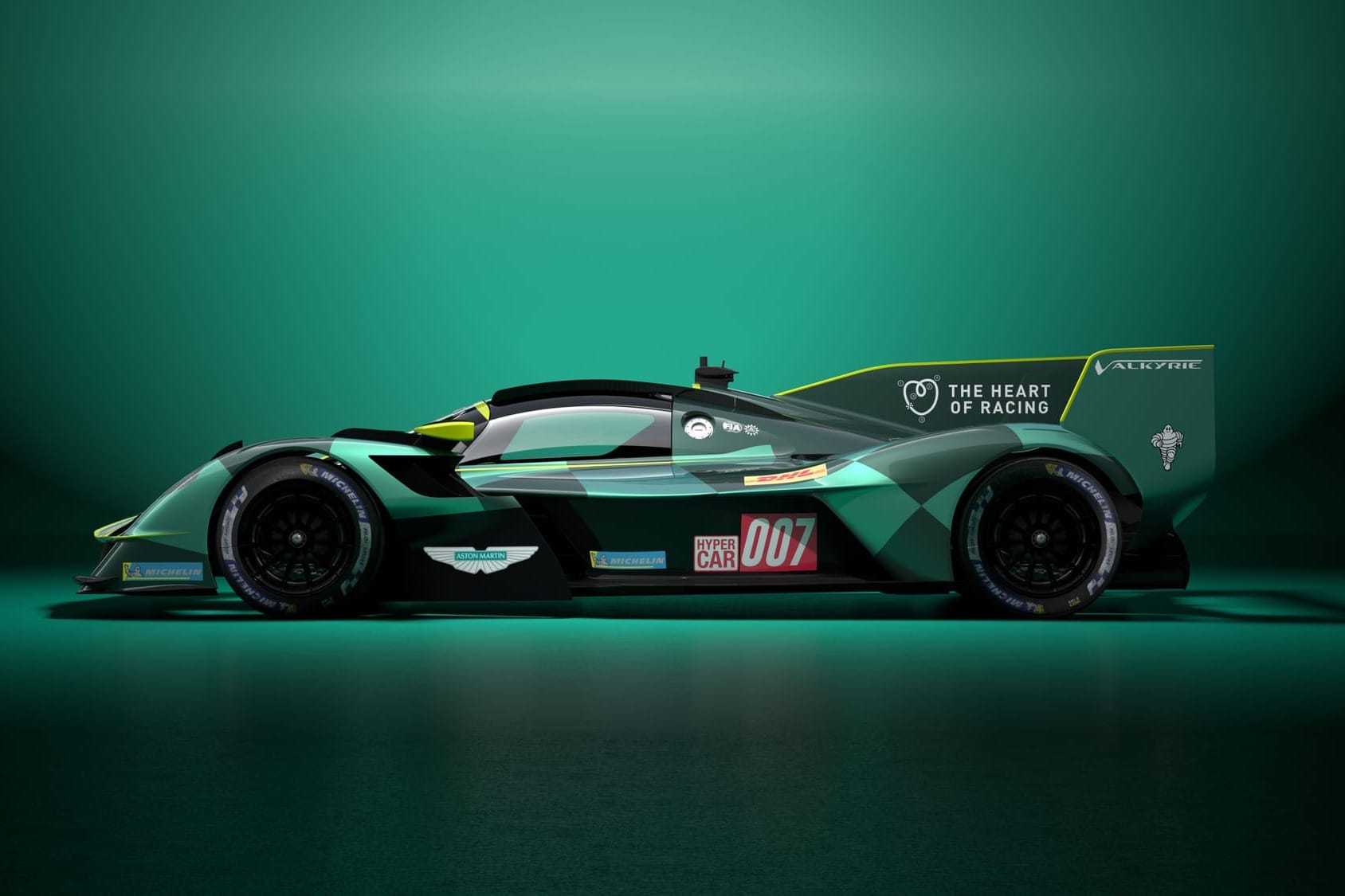
This question has been on the lips of many in the paddock since 2019, when the Automobile Club de l'Ouest/FIA agreed to allow manufacturers to base their racing cars on a production car, at the request of... Aston Martin, only for it put an end to its initial project before it rose from the ashes thanks to The Heart of Racing in October 2023.
"There's pros and cons," Carter replies. "Because of what the Valkyrie is, to develop that to a racing platform is less difficult than potentially other projects. When you go to a race car design, you're always going through compromises of architecture, layout, etc.
"And actually, this car has already been born from a performance aspect, so key architectural points are already in place. Then it's about investing resources in turning that to meet the specific FIA/ACO/IMSA regulation. So in some ways, actually it all comes down to what the pedigree of the car you are evolving from is.
"Given the Valkyrie is such a high-performance vehicle to start with, and has been designed by racing car designers, it actually makes it easier in some ways.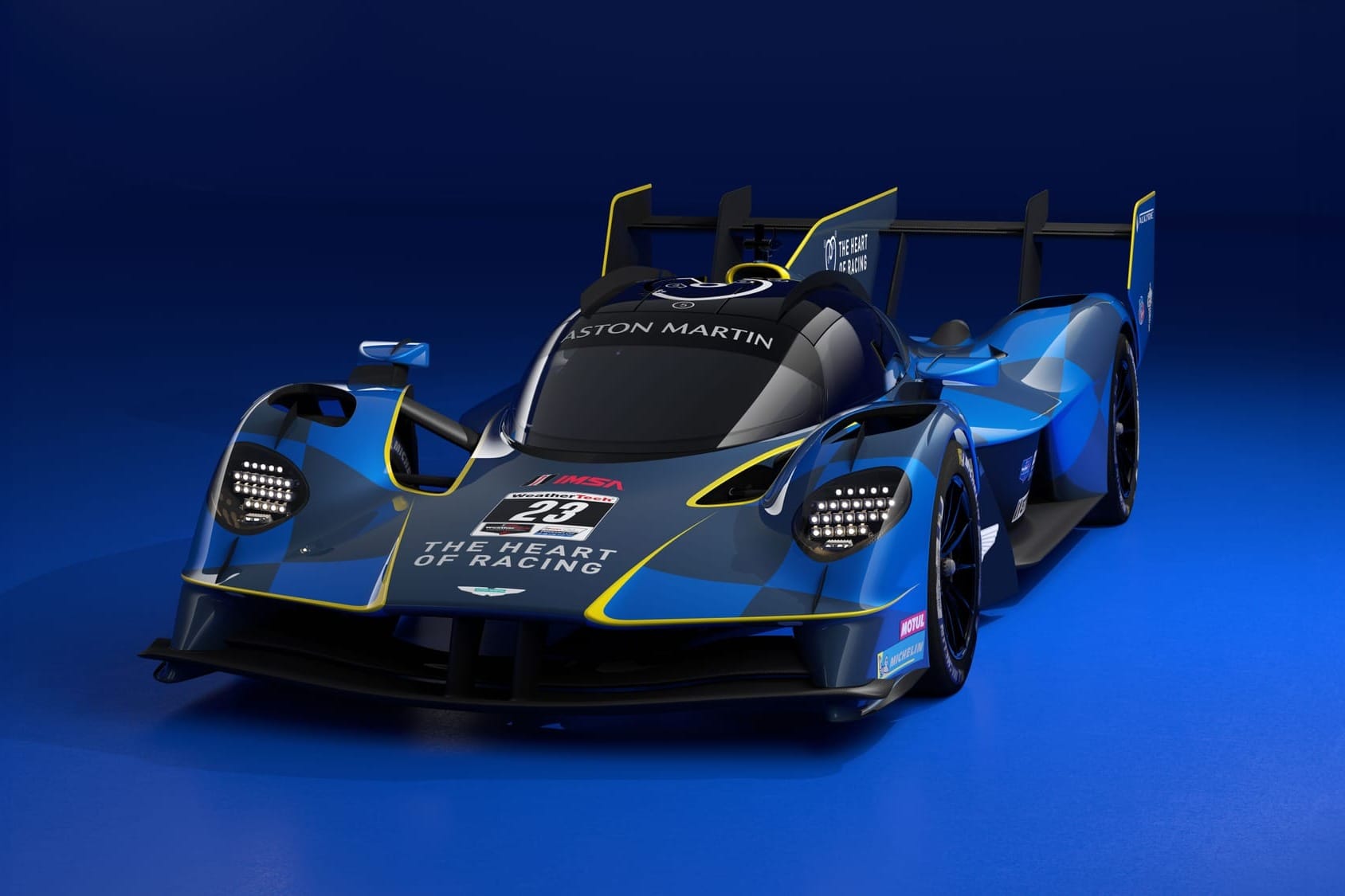
“It also allowed us to do the programme in the time frame that we have done. We were already a couple of rungs up the ladder in the development process. The powertrain has been developed and already got a number of endurance cycles at racing requirements. The chassis had already been laid out with that, with a racing mentality within it.
"The Valkyrie provided the most excellent platform in order to then turn into a race car. It would be almost unimaginable for Adrian [Newey], one of the greatest racing car designers in history, to design a car and not think about it going racing at some point."
By the way, as you can imagine, Adrian Newey will have no role to play in this project, despite his arrival at Aston Martin in March. As Carter confirms, Newey "will be 100% focused on F1".
How and why has the V12 been retained?
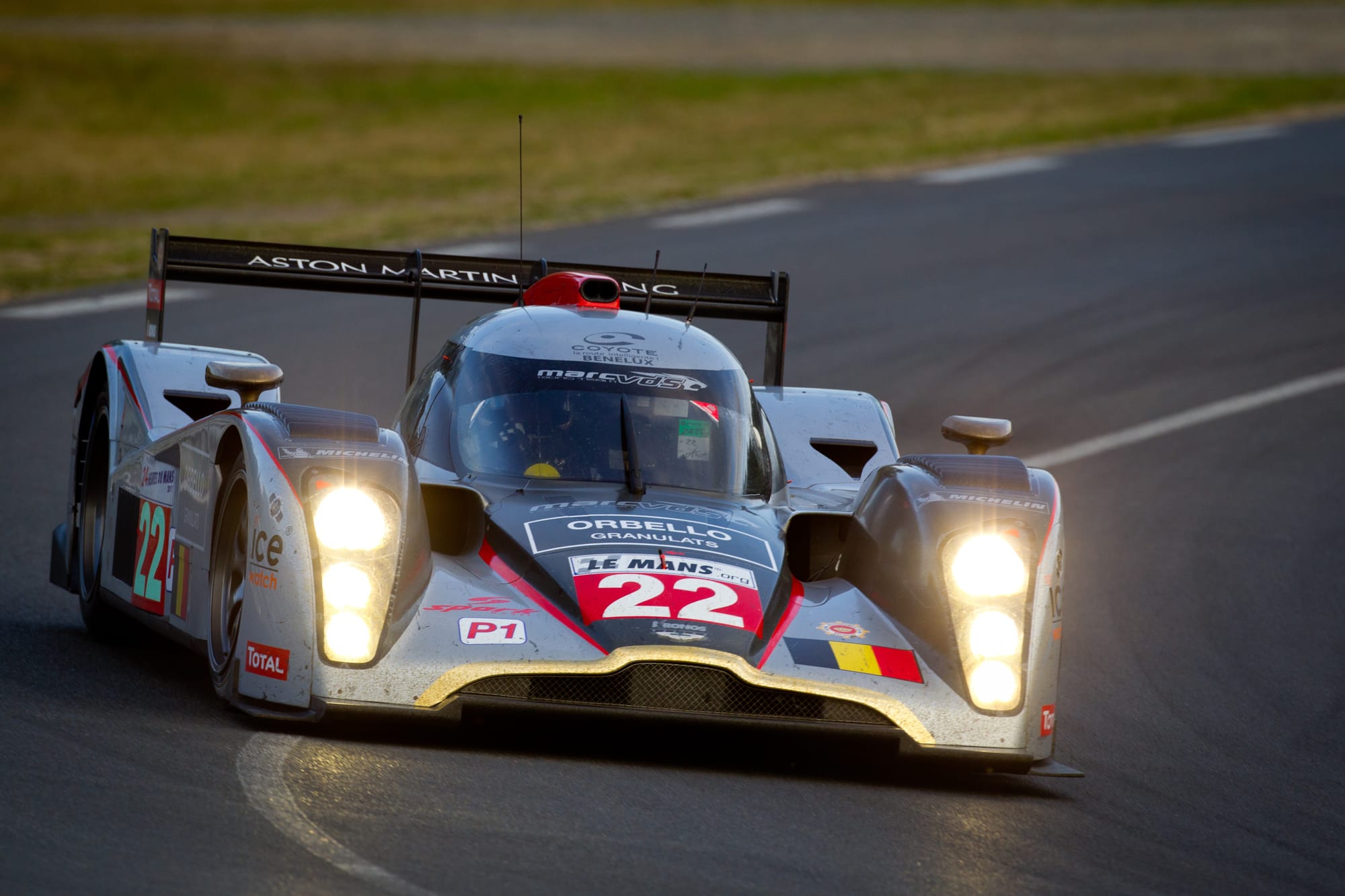
The Cosworth V12 is a major part of the charm of the British car. To find evidence of a top-class car powered by a V12, you have to go back to the last appearance of the... Lola-Aston Martin (pictured above), in 2011. But there too, it's impossible to keep the engine as it is, which in standard road-going form revs to 11,000rpm and develops over 1000hp, while a Hypercar/GTP develops around 680bhp.
"It's an extension of the Valkyrie car, which has the 6.5-litre V12 at the heart of it," Carter said. "For us, the synergy with that road car is part of the strategy as well. In terms of how it works within the regulation, everything is based closely on the torque control on the driveshaft.
"So how will you generate the torque at the rear wheels? That's a process similar to an LMDh, that has the ERS on the rear axle. With the hybrid system at front, the other LMH cars run with four-wheel drive. But the way the regulation is positioned around that, we're confident that we have a very capable package."
But how do you down-tune such an engine? "We've had to reconfigure and recalibrate the engine," Carter adds.
"In terms of reconfiguration, we had to rectify some of the components. So it's the same 6.5-litre V12 from the Valkyrie road car. Same crankshaft, same block, same cylinder heads...the main area we've changed is in the valve train. Running lean to reduce the amount of fuel you are carrying to deliver the required stint energy is important.
More endurance coverage on The Race
- Ford commits to a Hypercar - but there's a big omission
- 'One of the best' - Magnussen's eye-catching BMW debut
- Sargeant, Chadwick revealed as part of Hyundai's project
"We operate the engine slower than it's capable of because we require less power. The lower power limit within the regulations creates an opportunity for us to revisit the torque curve and reduce frictional losses by reducing engine speed to increase fuel efficiency."
But despite the fact that the engine revs have been drastically reduced from the 11,000rpm of the production car, the Valkyrie's V12 will still make your head spin.
"When it first started running, we were over-suppressed in terms of the noise because we took a safe position in terms of silencing, etc," Carter admits. "The worst-case scenario for us would have been to get stopped from testing because we're breaching the noise limits.
"So as part of the development programme, which has been driven purely for performance aids to reduce the silencer size in order to reduce the weight, the initial loading on the exhaust system and the underbody blockage, etc. When we've done that, it's unleashed more and more of that beautiful V12 soundtrack.
"It is what I was saying earlier if you look at the architecture of a Valkyrie, that 6.5-litre V12 is right at the heart of it. And actually this sound is part of the Valkyrie. I'm personally really looking forward to hearing it in Qatar [at the WEC pre-season prologue test and subsequent season opener] out on track against the others."
Why snub the hybrid system?
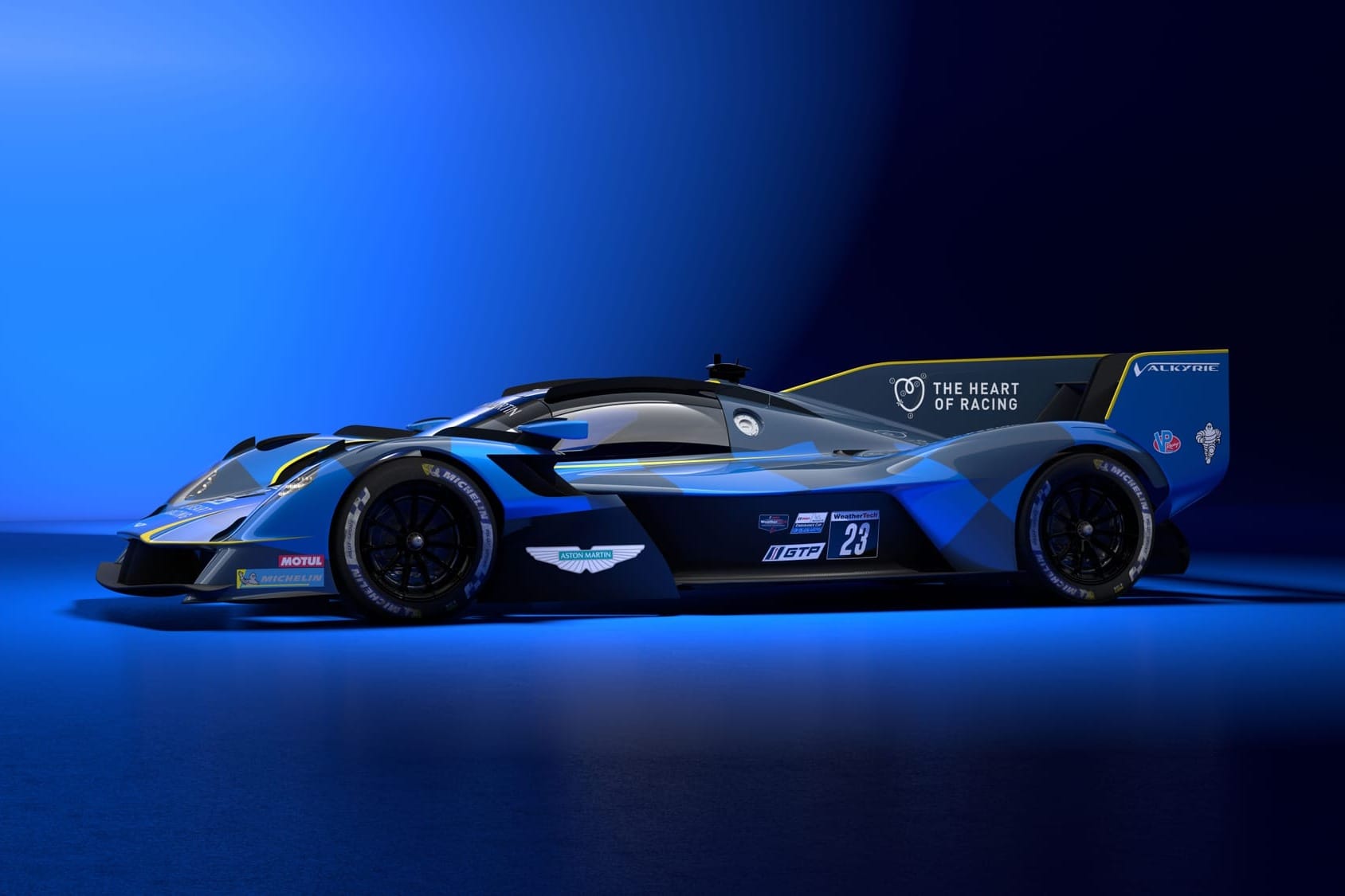
In this era, foregoing a hybrid system is a surprising choice. But it's also what makes this car such a purebred contender.
"There's always compromise to be made," Carter says. "So it's all about the total package and how it comes together. You can choose between LMH with four-wheel drive or LMDh, which are just rear-wheel drive.
"Hybrid cars have benefits of their torque delivery and if a manufacturer can get good synchronization with that, they have a great opportunity and have a great authority over the powertrain. The V12 power unit, as for history, delivers certain torque which can also be a benefit.
"So ultimately there's pros and cons, and it's about who optimises the best within their boundary conditions. So the fuel and the energy per stint will be calculated with it being a combustion-only engine. So ultimately, we'll go racing and see who does a good job of it.
"We know the amount of effort, the amount of development our competitors have put in. So we totally respect that the level of competition is very high and we know just by watching that some of our opponents have made big gains through running their cars as they learn more how to optimise their powertrain."
The other factor that led Aston Martin to dispense with a hybrid system was the way in which it was positioned. "The hybrid system of a Valkyrie is actually on the rear axle," Carter explains. "So then you're into different chassis concepts, monocoque, etc. The changeable front end, which comes with even further mass.
"There are also the cooling requirements of the hybrid system. So you'd be packaging the car in a completely different way and therefore the reflection of in line the Valkyrie would no longer be there as well."
Testing and ambitions
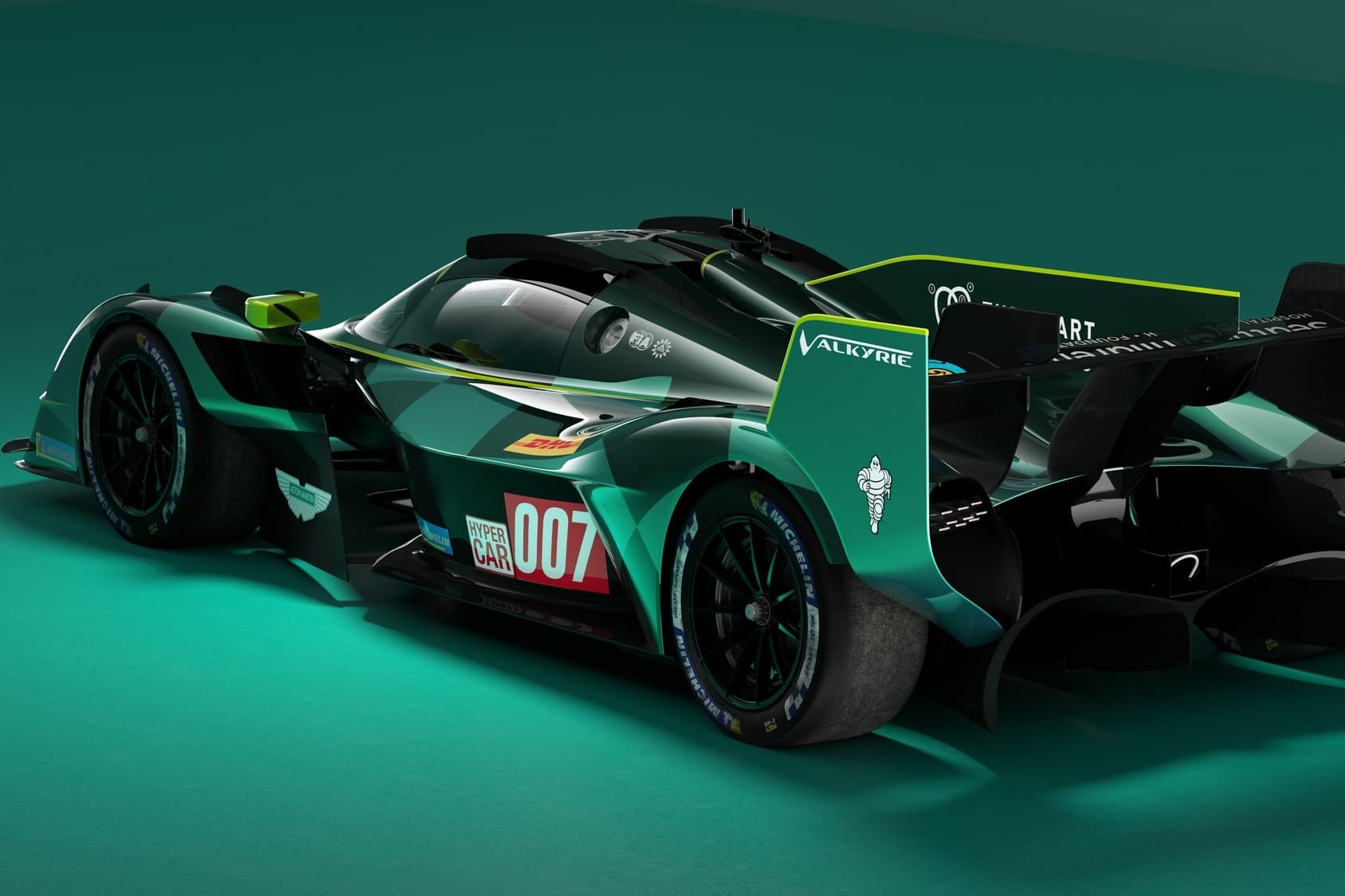
The Valkyrie's homologation process is almost finished and will be 'frozen' when it makes its first pre-race scrutineering run in Qatar. Racing in IMSA and WEC, it has passed through two windtunnels: Sauber Technology (Switzerland) and WindShear (North Carolina).
During testing, the car was seen at Donington Park, Silverstone, Vallelunga, Jerez, Bahrain, Qatar, Road Atlanta, Sebring and Daytona.
"We have completed over 15,000km of testing so far with this variant of the car," Carter says. "As we've entered this year, we are fully focused on the first race events and have testing planned throughout the year to extend our mileage. We want to continue to test ahead of Le Mans."
Team principal Ian James adds: "You can always be further up the road, but I'm happy with how the programme has progressed and with the reliability we have shown. The whole team, from design to AMPT, from the manufacturing element to the race team, I couldn't be happier with how everything is integrated."
At the track, the team will have to show that the titanic work carried out in recent months, in the design offices and since last July on the tracks, has paid off. Faced with seasoned competitors, this is not going to be an easy task. And the last Hypercar project backed by a private company, Lamborghini to be precise, clearly failed to live up to expectations.
"Of course, we only do it because we want to win," Carter concludes. "However, we respect the challenge of the events and the competition. They are at a high level, and that's why we want to compete against them. Fundamentally, it is only worth winning if it's against strong competition. We acknowledge that we will be joining them when they are already established.
"And so because we respect them, if we can complete this year having shown competitively, then I would take that as a good season."


























